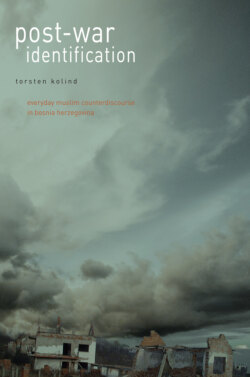Читать книгу Post-War Identification - Torsten Kolind - Страница 17
На сайте Литреса книга снята с продажи.
Structure
ОглавлениеThe instrumentalist approach, which focuses on the strategic use of violence, conflicts with structural theories; however, I have grouped them together because they both attempt to explain the origin of war and violence. Structurally inspired anthropological analyses of war and war-related violence have primarily focused on the inherent potential of violence and war to create identities. In a condensed form, the line of reasoning goes like this: Identity is built on difference, and when differences become too small, identity becomes threatened and violence then recreates or reinforces differences. This is Blok’s (2000) argument, for instance: following Freud, he calls violent practices aimed at destroying similarities and thereby creating the Other, the: “narcissism of minor differences.” As he writes in respect to the eruption of war in former Yugoslavia:
Once more we see the working of the narcissism of minor differences: the erosion and loss of distinctions and differences result in violence. (ibid. 41).
Violence as a technique to create the Other is also present in Malkki’s (1998) study of Hutu narratives of Tutsi violence:
Through violence, bodies of individual persons become metamorphosed into specimens of the ethnic category for which they are supposed to stand. (ibid. 88; original italics).
Violence, it is argued, creates the structural division on which identity is built: we are us because we fight against them, and vica versa. Consider also Harrison’s (1993) claim that violence in Melanesia has a structural function − that is, groups do not create war, war creates groups. As he sees it, both gift giving and violence create social relations, which are contrary to the view of Mauss, who saw violence as the failure of the gift (Corbey 2000, 2006). Sorabji (1995) has argued that the logic of the violence in many parts of Bosnia Herzegovina was to de-personalise social relations and annihilate existing cultural values of neighbourliness in order to install an ideology of nationalism. The violence was therefore often rather extreme and furthermore performed in local settings, so as to destroy the memory of ethnic coexistence. In a study of ethnic cleansing in Bosnia-Herzegovina, Hayden (1996) follows a different, but still structural approach. Inspired by Mary Douglas, he claims that in the nationalist ideologies of the new Yugoslav states reigned a vision of ethnic homogeneity that did not correspond to reality. The ethnic cleansing and the removal of populations that occurred during the war constituted an attempt to recreate the world to correspond to this vision. Finally, in his re-reading of Clastres, Bowman (2001) suggests that violence does not even have to be carried out physically to construct identity. Violence is a force that creates boundaries and may operate conceptually prior to manifesting itself in action. It is the imagining of violence that “…serves to create the integrities and identities which are in turn subjected to those forms of violence which seek victims” (ibid. 27), and it is the imagining of violence against the Other that is the medium through which (embedded) societies are represented to themselves.
So far we have two different explanations of war and war-related violence. In the first, violence is purely instrumental and contextual, which means that violence is never studied in its own right. Often such analyses inspired by political science explain war but do not account for what happens when violence breaks out. In doing so, they overlook the cultural framework in which violence is constructed and interpreted (see next paragraph); miss the possibility of operating with innate structural properties of violence; and often reproduce a Hobbesian view of human nature, which views violence as latent and erupting when the centralisation of power erodes. In the structural approach violence is perceived not as a source of social power, but as a source (either acted or imagined) of identity. Furthermore, the inherent logic of violence creates subject positions without the help of any concrete subjects. This perspective ignores the fact that the use of and reaction to violence can change the course of violent events. Claiming that violence creates unambiguous identities, therefore, only accounts for part of the process relevant for understanding the relationship between violence and identification. Violence plays a part in constructing a general polarised atmosphere of ‘us and them’, but this does not say anything about how people react or relate to such a dichotomised space of identity. Furthermore, even if we accept the idea that violence creates unambiguous identities, such consequences should not be confused with explanations of why violence occurs in the first place.
